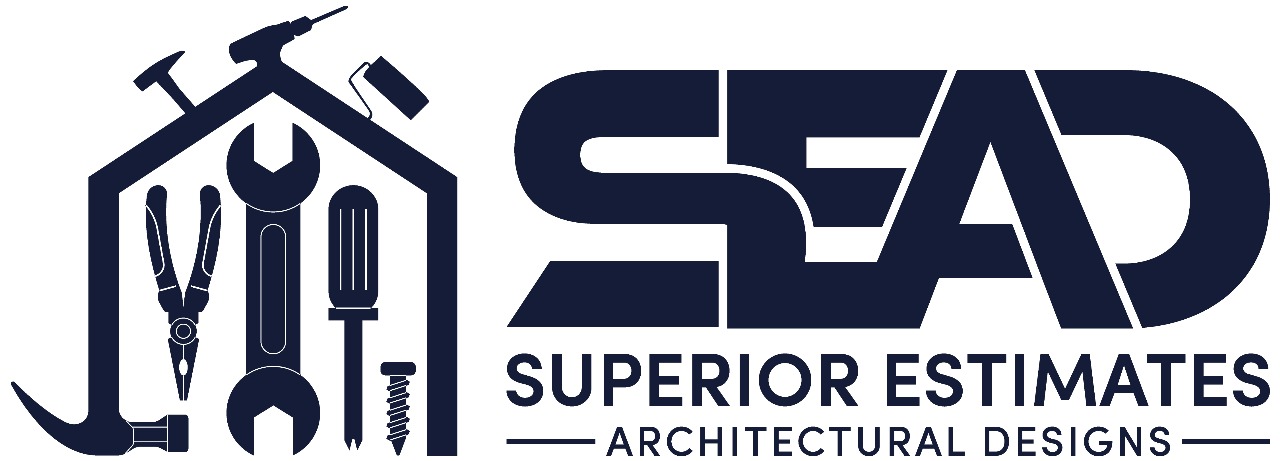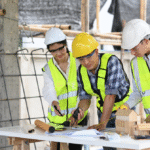In this ever changing construction industry, safety is not just a regulation, it’s a foundation. In SEADs (Superior Estimates Architectural Designs), we recognize the fact that any budget or blueprint has no value unless security of the workers is not prioritized. With one of the highest risks, construction requires a more active safety first mindset. We leverage smart planning, advanced technology, and division-specific understanding to help safety from the preconstruction stage to project completion.
Regardless of whether you do cost estimates for commercial, residential or industrial projects, safety must be made to flow through seamlessly instead of as an afterthought added on later. This is how SEADS’s champions ensure safety using precision and the process.
- Smart Planning and Site Preparation:
A locally intelligently prepared site is the beginning of every safe build. We keep safety considerations in mind right from the beginning here at SEADS – including site access, traffic flow, material staging zones, and hazard mitigation in our estimation and design processes. This early warning of potential risks such as utility inference or limited access paths aids clients to develop a defined and controlled jobsite environment. This forward-looking planning also reduces interruptions and prepares the ground for a secure productive build.
- Technology as a Safety Asset:
Safety at the job site is evolving at a high rate due to the development in construction technology. Tools such as drones, augmented reality, virtual safety simulations, and automated monitoring systems are no longer a thing of the future; they are a facility requirement. At SEADS, we promote the incorporation of these tools in our budgeting and planning services, meaning those who need our services can take advantage of them without busting the budget. From wearables that monitor the fatigue of workers to AI-based risk prediction platforms, technology today gives supervisors the ability to help prevent accidents instead of simply reacting to them.
- Personal Protective Equipment (PPE) Planning:
PPE is the most fundamental but necessary aspect of jobsite safety. In SEADS, we assist clients to assess PPE requirements of each division – not only for regulatory compliance but work specific protection. To mention a particular case, employees carrying out masonry tasks in Division 04 need different equipment as compared to workers engaged in HVAC activity in Division 23 or the electrical one in Division 26. We also advise to budget for the proper storage, maintenance and periodic replacement of PPE, preventing companies from compliance violations and reducing the injuries due to worn-out equipment.
- Excavation & Trenching Safety:
Trenching and excavation are still some of the most dangerous operations on a jobsite. Our estimates for Division 31 earthworks include provisions specific for measures of safety like sloping, benching, shielding, and shoring. We also factor in weather conditions, soil types, and utility conflicts underground to ascertain whole planning. Our efforts in incorporating these elements in our estimates help the clients gain both regulatory approval as well as peace of mind.
- Training and Jobsite Communication:
Proper communication is no safety protocol that can be complete without. SEADS encourages the use of the collaborative platforms, mobile applications, and digital signage to inform all the team participants about the updates, threats, or the changing procedures. Apart from this, we recommend continuity of training programs such as toolbox talks, orientation and situational response training. Good communication is not only a good practice – it’s a life-saving measure that minimizes confusion and enables workers’ decisive actions in the critical moments.
- Chemical Safety and Material Handling:
Some of the hazardous materials involved in the construction projects include adhesives, solvents, and insulation materials. At SEADS, we also know these requirements but help our clients to establish their safety plans under the Hazard Communication Standard by Osha. This involves budgeting for adequate ventilation systems, labeling procedures, containers for storage and development of Safety Data Sheet (SDS) stations in the site. Chemical handling is just as budgetary as it is safety-themed – and we help you address both.
- Equipment Safety and Operator Readiness:
The primary function of heavy machinery is at the core of construction – and abuse/neglect may have serious consequences. Our estimates not only cover costs of equipment rental, procurement, but also allow for operator certification, inspection schedules, and maintenance. Be that as it may, when it comes to either Division 05 steel fabrication tools or Division 22 plumbing machinery, we guarantee that there is adequate safety infrastructure. Seads will keep you on the lead with regards to prospective equipment-related hazards as it will ensure that safety is a line item from the onset.
Integrated Safety:
Safety in construction is not a separate department – it must be incorporated in each Scope, schedule and budget. In our firm, SEADS, we adopt an all-round method on the estimation while accounting for safety as one of the priorities and not a tick box. Having worked with more than 25 years of experience supporting the general contractors, developers, and design teams, we know how to provide precision and protection for every job. If you’re dealing with a high-rise commercial project or an aggressive industrial build, SEADS has you covered to guarantee that safety is a part of your plan from day one.
Call us today for your personalized quotation!



